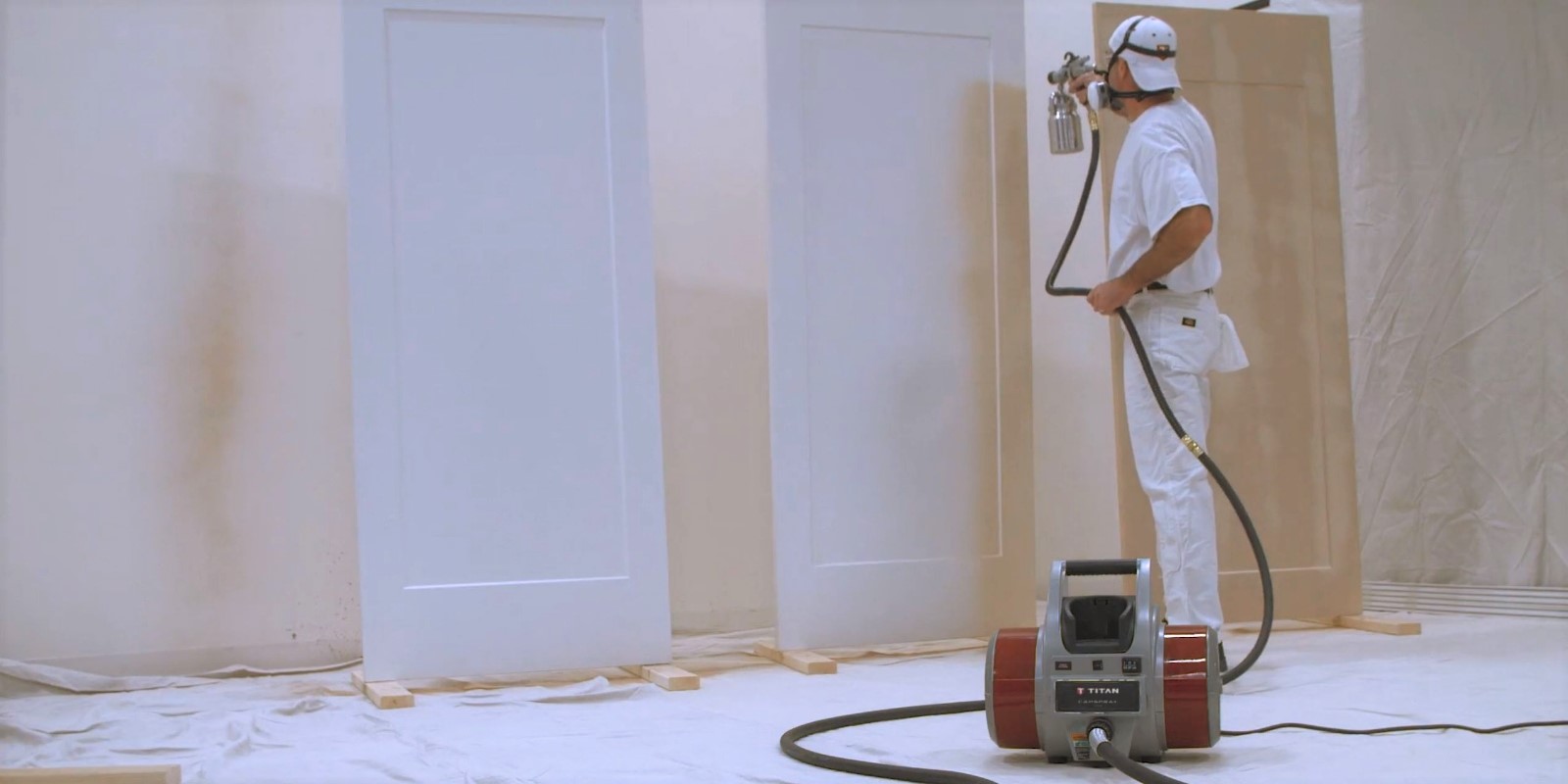
When considering investing in an HVLP sprayer, you’ll want to apply the same general rule as with every other tool in your arsenal: buy the right one the first time.
This can be easier said than done, however, especially if you’re new to the world of HVLP (high volume, low pressure) sprayers. So where do we start?
First and foremost, it’s important to understand the basics of how HVLP sprayers differ from airless sprayers, along with some key considerations based on stage, gun, and technique. Let’s dive in.
Advantages of HVLP Sprayers
When compared to conventional airless sprayers on a basic level, HVLP sprayers produce a finer finish with less overspray. They provide extremely precise control over the size and shape of the spray pattern, the rate of application, and the thickness of each coat, making them a highly desirable option for a wide range of fine finishing applications.
HVLP sprayers also have a greater transfer efficiency due to a higher volume of air (up to 25 CFM) atomizing the coating at lower pressures (up to 10 PSI). With transfer rates between 70 and 90 percent, HVLP sprayers are also more accurate, resulting in less time spent masking and prepping, less material waste, and more profits.
Cleanup is streamlined with HVLP sprayers, since most of them siphon coatings from a small, quart-sized cup that is simple to clean. This differs from most airless sprayers, which siphon from large containers and require several more steps during the cleanup phase of a project.
The higher transfer rate of HVLP also means more coating is being applied to the surface rather than being released into the air around the project, helping protect the environment and contractors on the jobsite from volatile organic compound (VOC) emissions, also making it possible for contractors to comply with clean air laws that may apply in their working area.
When to Use an HVLP Sprayer
While HVLP sprayers can handle most jobs reserved for airless sprayers, they should not be considered as an alternative when spraying large, flat surfaces on a regular basis. HVLP sprayers are more precise and are thus generally used for fine finishing jobs such as trim, doors, windows, furniture, and cabinetry.
Production is generally slower than airless and some high-viscosity materials may need to be thinned before being used with an HVLP sprayer. Therefore, HVLP shouldn’t be viewed as a replacement for airless spraying, but rather as a complementary option for jobs that require a finer finish.
Choosing a Stage
The coatings you’re looking to spray will play a key role in determining the preferred size of your HVLP sprayer. Ideal HVLP sprayer size is determined by stages, which reflect the number of turbines spinning inside the sprayer that create the pressure needed to atomize the coating. A greater number of stages means a greater number of turbines and atomization pressure.
For light coatings like stains, lacquers, enamels, or multispec, a smaller two- to three-stage HVLP sprayer will do.
If you also want the ability to spray epoxies, oil-based house paints, or heavy stains, upgrade to a medium-sized four- to five-stage HVLP sprayer.
To apply all the coatings listed above in addition to heavier coatings like finish-quality latex paints, you’ll want to get a larger five- to six-stage HVLP sprayer. Many contractors invest in a five- to six-stage HVLP sprayer so they can spray a wide variety of coatings to get the most usage from their sprayer.
Gun Considerations
The gun of an HVLP sprayer is a complex system that converts airflow into atomization performance. By adjusting the air cap and two simple knobs on the gun, you can easily control the air flow, flow of fluid, and fan pattern width and direction. For HVLP sprayers, there are only five to seven tip options, as opposed to 100 or more with differing fan patterns and orifice sizes for airless sprayers.
Technique
When operating an HVLP sprayer, the technique is basically the same as with an airless sprayer: start at the top of the substrate and move your way down, overlapping about 50 percent as you go. However, with HVLP, you’ll only spray about six inches from the surface instead of 12, and you can also move more slowly to achieve a more detailed level of work.
The primary advantages of investing in an HVLP sprayer are low overspray and precise control. This means there’s less masking and minimal waste of your coating materials, which leads to higher-quality results and greater profits for your business.
Spray Smarter with Titan Tool
Boost every job with the unbeatable power, speed, and control of a Titan paint sprayer, perfect for fine finishing applications of any kind. Built for maximum durability, Titan is the only business choice for best-in-class ROI and dedicated support whenever you need it.
Browse our fine finishing paint sprayers and our collection of parts and accessories to start experiencing better results, every time you pull the trigger.

